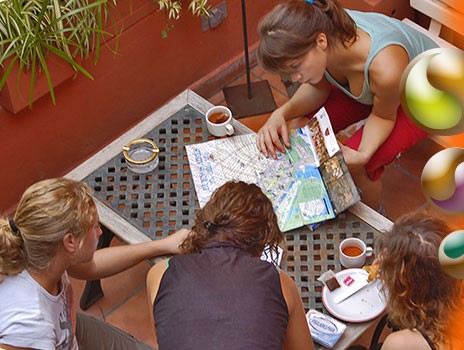Cerro Catedral in the vast winter playland of Argentina’s Lakes District is home to the country’s largest ski destination.
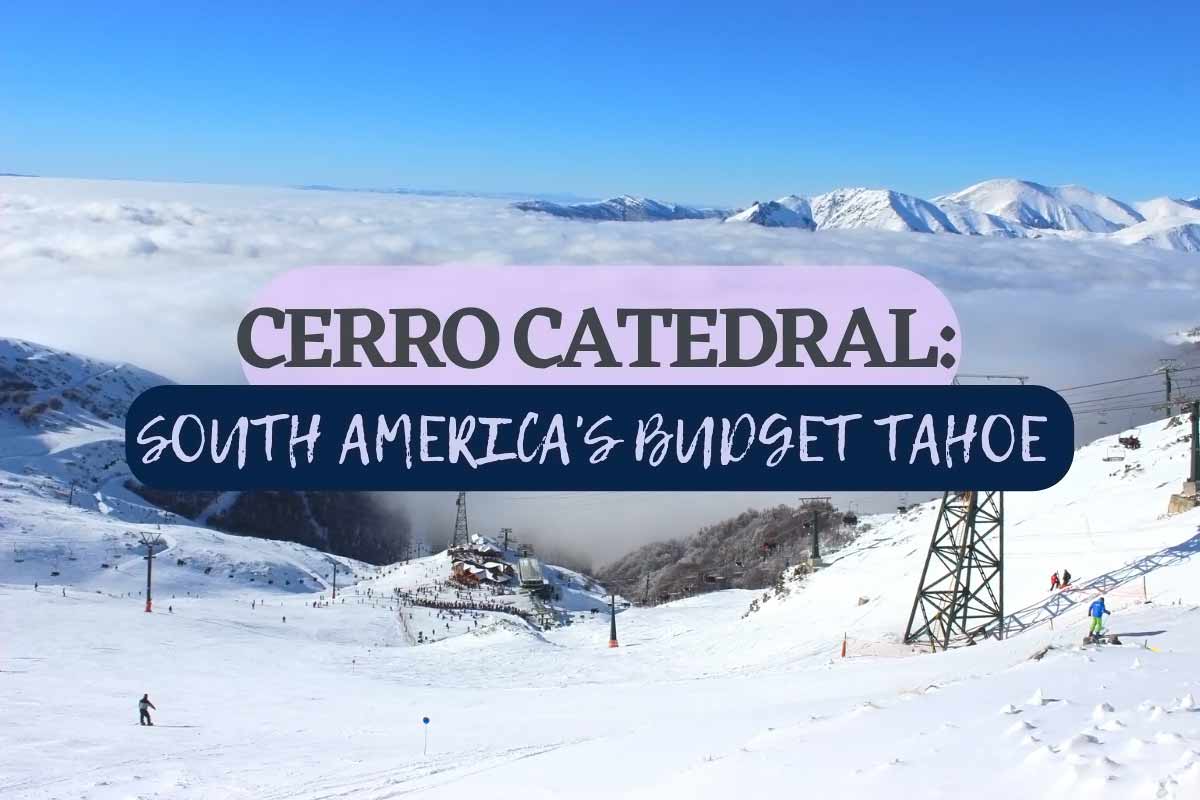
Catedral Alta Patagonia Resort is popular both for its extensive terrain spread across three mountains and its 19-kilometer (12 mi.) proximity to San Carlos de Bariloche, Patagonia’s second-largest city.
The 1030 meter (3379 ft.) high resort boasts 120 kilometers (75 mi.) of terrain on 70 different slopes served by 39 lifts, one tram and four-person gondolas.
South America’s oldest ski resort debuted in 1938 and today features a full-service village at its base.
Nearby Bariloche is Argentina’s only bona fide ‘ski town‘ full of breweries, world-class restaurants and chocolate shops.
New & Improved Ski Slopes
V&S Boutique Hostel is a place to stay that ticks all the boxes.
It’s reasonably priced, clean, and offers guests a wide range of activities.
It is also located in the thick of the action downtown — this could be either a plus or a minus, depending on what you’re after.
This post includes affiliate links. If you make a booking we receive a small commission at no extra cost to you ❤️.
A Laid-Back but Social Downtown Hostel
Most Buenos Aires hostels are gathered around the tango bars and steak houses of San Telmo, or the bars and clubs of Palermo, but the microcentro area offers a happy compromise.
The corner of Viamonte and Suipacha streets lies two blocks walking distance of the pedestrian thoroughfare of Florida and Galeria Pacificos, a shopping mall that contains the Borges Cultural Center.
It’s also two blocks away from the spectacular Teatro Colón, among the world’s most celebrated opera houses.
Transportation is no problem here with numerous bus stops and subway lines running nearby.
Getting to San Telmo from the V&S takes less than 30 minutes on foot, and is even quicker by public transport or by using one of the city’s free bikes.
Palermo is slightly further away but still easy to reach from here.
The only drawback of being based downtown is the noise and hustle of a typical working day, which confront you as soon as you step out the door.
If you can cope with that, you’re in a very convenient spot for a fun stay in Buenos Aires.
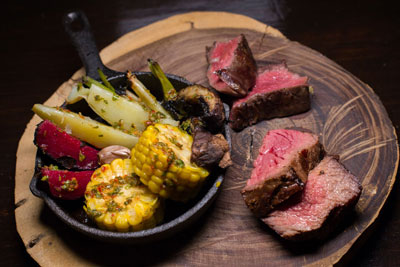
Discover Argentina’s Asado Tradition in a friendly, fireside atmosphere.
The Space: Peaceful but Social
Inside, the V&S is relaxed and comfortable.
Typical Argentine early 20th-century elegance is reflected in details such as the antique elevator, the cozy library and the French balconies and terrace overlooking a park.
The communal area is sunny and spacious, decorated with touches of rural Argentina.
It’s also dominated by a gigantic TV, perpetually alternating between movies and sports, depending on who has wrestled control of the remote.
V&S offers all the standard features you would expect from a good hostel.
The price of your room includes a buffet breakfast (until 10:30 am), introductory Spanish and tango lessons, and personal lockers (bring your own lock for extra security).
Internet access and laundry are available for a small fee.
The staff helps arrange trips to the usual attractions such as football games, theater and tango shows.
The management also finds a good balance between encouraging a peaceful environment for guests who need their rest, while providing plenty of opportunities to socialize.
Group dinners are arranged a couple of times a week they can get guests discounts at various recommended nightspots every night of the week.
On Thursday, Friday, and Saturday nights the hostel puts on live shows highlighting Argentine genres of music, such as tango and national rock, giving guests the chance to experience the local scene.
Rates vary slightly depending on season and length of stay, but the cheapest option is the 8-person room.
Four-bed rooms, with either external or internal bathrooms, are a slightly more expensive alternative.
Private rooms for solo travelers or couples with a small balcony and private bathroom are also available.
A huge plus is that all rooms have air conditioning and heating, an important feature during Buenos Aires’ chilly winters and muggy summers.
If you’re looking for a downtown hostel in Buenos Aires, head to V&S for a more relaxed environment.
If partying is on the agenda, check out the nearby Milhouse Hostel on Avenida de Mayo.
Book V&S Hostel Online
Viamonte 887 (corner of Suipacha)
Retiro/Downtown
Though Catedral is South America’s most elderly resort it has undergone several multi-million dollar renovations.
A 2009 revamp doubled the lift capacity to 22,000 and added four kilometers of cross-country skiing trails and a new terrain park.
An added tubing trail and a toboggan run provides more activities for the non-skiers in the family.
Catedral’s modernization also included the purchase of snowmobiles and quadbikes for back-country tours and to reach the exclusive mountain restaurant, La Cueva.
The upgrades brought Cerro Catedral newfound international attention.
The same year, Ski Rebel magazine dubbed Bariloche a ‘winter sports giant.’
The Toronto Star went so far as to call Cerro Catedral the world’s number two ski destination after Aspen, Colorado, (somewhat self-deprecatingly considering the resorts in Canada).
Due to the wet conditions and proximity to Lake Nahuel Huapí, Cathedral is actually best compared to, not to Aspen, but Lake Tahoe.
Although there is a lot of snowfall, the snow at the lakeside ski mecca is usually more like ‘California cement’ than light ‘champagne powder.’
The sometimes dense snow and a few older lifts are the resort’s biggest drawback for spoiled snowhounds accustomed to world-class skiing.
But recent upgrades include many more snow-making machines for the base, which has helped the resort extend the ski season.
Cerro Catedral is a favored destination for pro skiers and snowboarders from the Northern Hemisphere for its deep powder, extensive off-piste terrain and of course the opportunity to ski when it is summer in the Northern Hemisphere.
A fifth of Cerro Catedral slopes are for novice, while the bulk is easy intermediate with a few tricky spots.
The remaining 15% is advanced and expert terrain.
→ Find out about booking flights to Bariloche online
Ski-tacular Views and Rave Boarding Reviews
Day passes at Catedral cost about half the price of the most well-known resorts in the western U.S., Europe and Canada and the views of the Andes mountains are free!
Visitors are treated to incredible views of Nahuel Huapi and Gutiérrez Lake and Mount Tronador on the ski lifts.
Grooming of the slopes is good and there is enough different terrain here to satisfy speed demons, freestylers and tree skiers and boarders alike.
As of 2024, skiing is not as much of a middle-class sport as it used to be in Argentina, although Bariloche locals can get reasonable season passes.
Just like in Aspen, there is local celebrity spotting on the slopes, tabloids document Arab princes who fly in on private jets and there are tangibly-related VIP events such as snow-themed fashion shows with top designers and models.
Costs to Ski & Board
International travelers will find Cerro Catedral a bargain and the lower ticket prices are even further offset by the prices of Argentina’s succulent steaks and fine Malbec.
Be prepared for higher prices during the high season, but it’s not too bad a deal compared to Big White in Canada, Lake Tahoe in the USA or Chamonix in the French Alps.
In 2023 with a strong dollar, rental equipment plus ski passes were US$50-70 per day in the high season.
Sticker shock came in 2024 with ticket prices starting at US$115 per person per day in the low season.
The resort wanted to price tickets even higher at US$155 per person, but the municipality stepped in to prevent it.
Presumably, the ticket prices were set preemptively high in pesos to beat inflation.
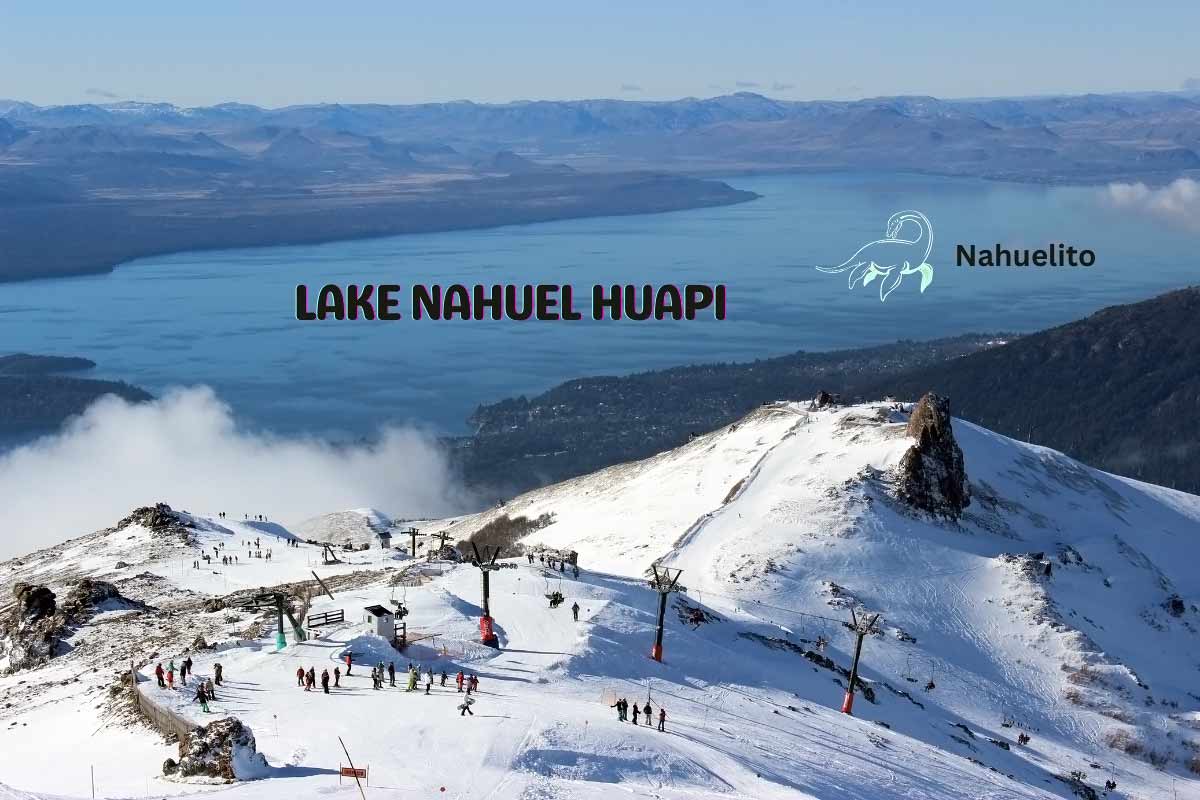
Beginners just using the bunny slopes will be glad to know that beginner tickets cost less.
To make things easy, prebook a package from an English-speaking local company that includes transport to and from downtown Bariloche, and your rental equipment set aside ahead of time in order to hit the slopes as fast a possible.
If going for a few days or a week, there are discounts for buying multi-day passes.
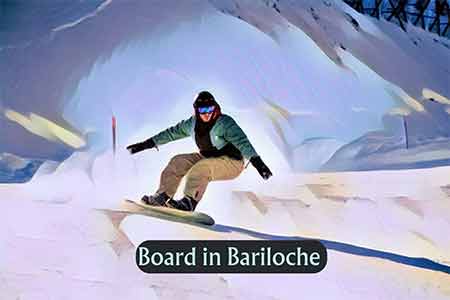
Skip the lines: Transport, Rental Equipment + Ski Pass all in 1+
Recent Upgrades
This year’s exorbitant ticket prices aren’t for nothing though.
Cerro Catedral has continued to modernize over the past few years.
In 2022, they inaugurated the new Lenga quad chairlift, servicing the upper part of the mountain.
The following year in 2023, they expanded lift access even further by enabling the state-of-the-art Cipres six-pack chairlift and the Ñire quad lift servicing the lower and middle mountain areas.
For the 2024 ski season, Cerro Catedral will debut an enhanced snowmaking system allowing for skiing all the way down to the base area from June through October, dramatically extending the potential ski season.
The resort has also implemented a new online solution for purchasing and recharging lift tickets and passes.
Visitors can simply recharging their cards online and go directly to the lifts.
Or they can pick up new cards at self-service kiosks conveniently located around Buenos Aires, the Bariloche airport, downtown Bariloche, and at the resort’s base area.
Skiing in South America: When to Go
We’re in the southern hemisphere here at the end of the world, so don’t forget the seasons are reversed.
Bariloche qualifies as an excellent candidate for ski junkies, or even professionals from the northern climes looking to ski during their summer.
The ski season in Bariloche typically begins in late May or early July and usually ends in September.
A really good snowfall year may see the season extend until October.
Bariloche’s snowfall is sometimes disappointing early in the season and the resort doesn’t make as much snow as it could at the base of the mountain.
If going during the high season of June-July there will be more lines. The best time to go to Bariloche to ski is later in the season, even August is ideal.
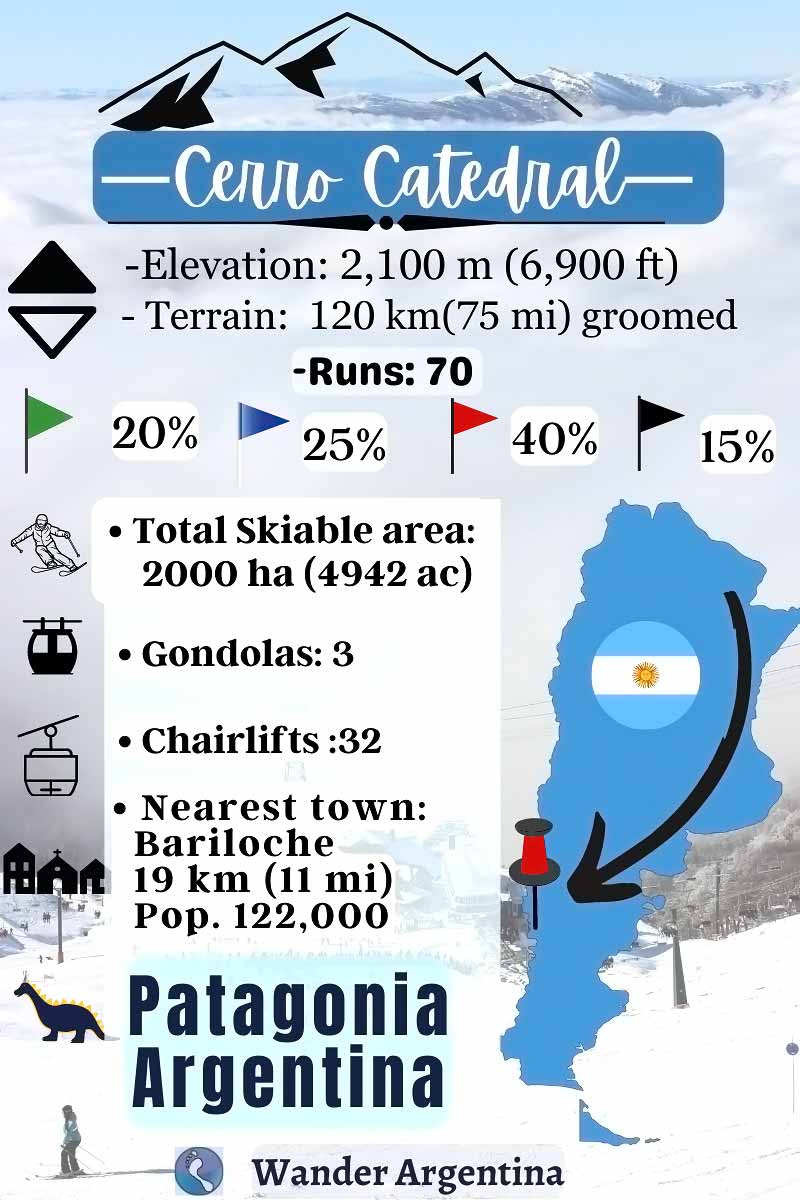
What Areas to Ski or Board by Level
Beginner skiers will be happy to find that lower-cost tickets are available for just the bunny slopes.
The ‘snow baptism’ is offered in the in the Platform 1200 area.
This is where up-and-coming snow bunnies learn to snap in, take the T bar and get acquainted with the fine art of falling down.
Intermediate and advanced skiers and snowboarders know the drill: head to the top of the mountain early and stay up there all day.
Take the Quadruple ski lift to Punta Nevada, for an easy first run on Copper Mountain or Barrilete run, or through La Hoya to El Filo, where you’ll be rewarded with a spectacular view of the Andes.
The backside of the resort’s La Laguna forest area boasts some of the best tree-skiing in Argentina for advanced skiers and boarders who can deftly swerve through trees. Watch out for tree wells.
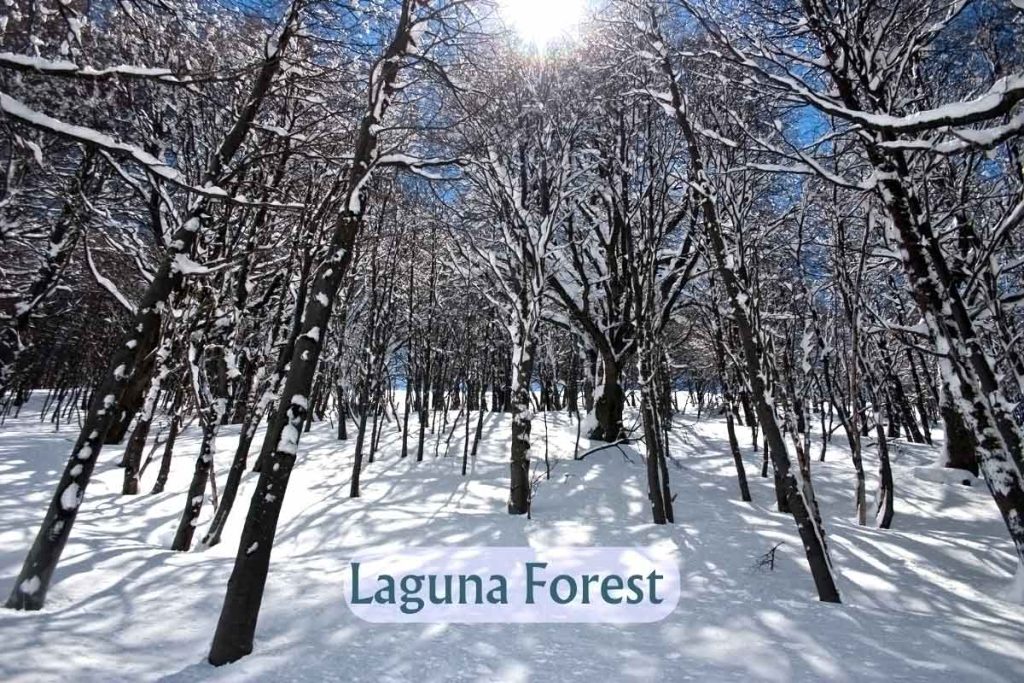
Travelers should keep in mind that the school holidays during the July/early August high season mean that Bariloche and the slopes of Catedral are crowded with relatively inexperienced skiers at that time.
The annual ‘Fiesta Nacional de la Nieve‘ (National Snow Festival), with a parade, race-of-the-waiters and election of a ‘Snow Queen’ also takes place around the school vacation.
The ski resort’s previous laissez-faire attitude toward slope grooming has since improved, but it’s worth noting that there may still be some macho skiers whom it may be best to give some leeway on the slopes.
But those who love ‘pow pow’ will be happy to know there are 98 days of snowfall a year here — the most of any ski resort in Argentina.
What to Bring for South American Skiing
If you are serious about skiing, or plan to ski a lot consider bringing your own equipment and ski wear to save time and money.
If you don’t wish to carry it basic equipment rental is available at reasonable prices, but everyone knows that breaking in boots can lead to blisters, so at least consider bringing your boots if possible.
Since imported items such as clothes and outdoor wear tend to be expensive in Argentina due to import taxes, so there are a few things to remember to pack:
• High-quality mirrored UV-protected goggles like these.
Not only can it be really bright, but it can also get hazy on Cerro Catedral, so it’s important to have goggles that provide good depth perception on the slopes.
• A good wind-proof ski or snowboard jacket with lots of pockets like these. It gets windy and wet in Bariloche so you will want a good wind-breaking, moisture-resistant jacket.
• Sunscreen — the snow reflects the sun, so don’t forget you get double the sun.
There is sunscreen available in Argentina but it can be expensive, greasy and gross — finding a decent one requires shopping around, try higher-end pharmacies.
Non-Skiers/Pedestrians
Pedestrians can hitch a ride on the Amanacay Cable Car starting at 10 a.m. every day during the season to dine at the Parador La Roca and enjoy the views offered by at the top of Cerro Catedral.
Can you Move to Bariloche & Be a Ski Bum?
Those who have resident status can scoop up a ski pass and packs before the 2024 season begins which offers moderate savings.
Without local residency papers, the season’s pass costs considerably more but is still doable.
Most visitors can stay in Argentina for a total of 6 months by simply renewing their tourist visa after three months.
This region of the Andes has some of the world’s most breathtaking landscapes and Bariloche is a winter wonderland that also offers an abundance of coffee shops and co-working facilities.
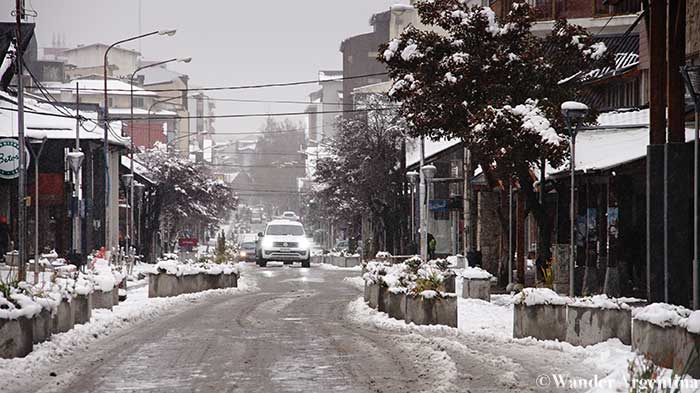
If season-long good skiing conditions are your main pursuit you may be more satisfied with Portillo Resort in Chile or Las Leñas in the Mendoza province.
Las Leñas, further north in Mendoza is a resort, far from any cities, so the dining and services are isolated, meaning they’re expensive and there are fewer activities.
Las Leñas views of the Andes also don’t include lakes.
And if you were really going to commit and move to South America to be a ski bum, Bariloche would probably be your best bet in Argentina.
→ Read about the Andean Lakes crossing tour and book online
• Read about hotels in Bariloche or book hotels in Bariloche online.
Cerro Catedral
San Carlos de Bariloche
Río Negro Province
Tel: (02944) 420268
Summit: 7,152 ft. (2180m)
Base: 3,379 ft. (1130m)
•Open: Average of three months per year
•Season: Late June/Early July until October (thanks to new snowmaking equipment).
Hours: 9.30 a.m.— 5 p.m. (ski & snowboard) 10 a.m. — 4 p.m. (pedestrians).
• Childcare services offered
• Those 70+ ski free!
• Equipment rental available
• Heliski available
Getting there from central Bariloche:
• By car: Take Bustillo Avenue to kilometer 8, turn left to reach the parking area.
→ Read about driving in Argentina and renting a car
• By bus: a shuttle leaves for Cerro Cathedral every thirty minutes from the bus station and stops all along the main strip in downtown Bariloche and along Bustillo Avenue.
Buses are inexpensive, but you will need a special smart card to ride the bus called the Sube. Conveniently it’s the same card used to ride the subway in Buenos Aires.
If you don’t have one, ask your hotel to lend you one, and keep in mind you will probably need to put credit on it
-A reader recently contacted us to inform us that Bariloche shuttles are often full at peak times, so they had to wait an average of one hour and up to two hours for a bus. Your, erm, mileage may vary. By booking private transport or renting a car you can avoid the waits for public transportation.

